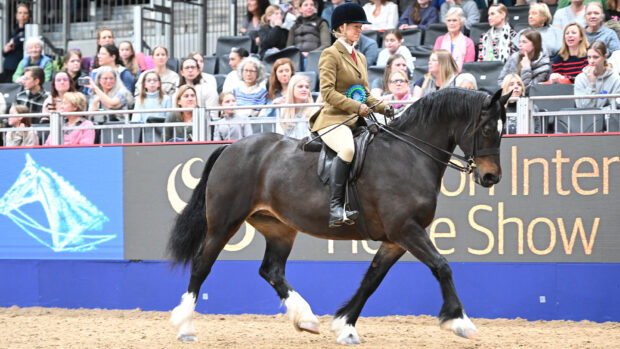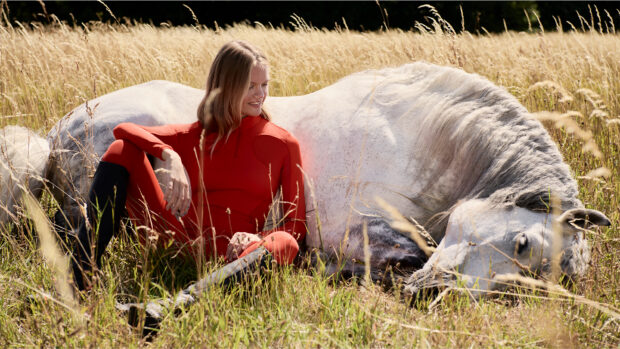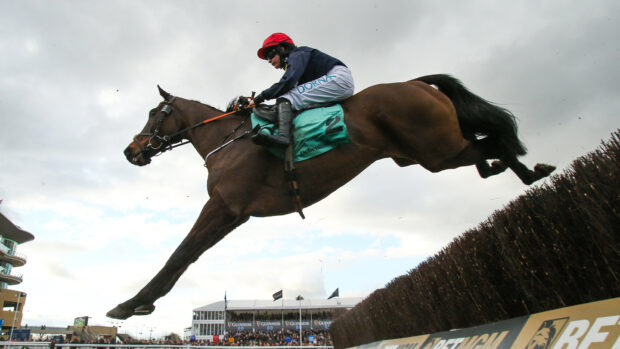The pointer, sometimes called the English Pointer, is a supreme scenting machine. It is a stylish gundog, bred to cover large expanses of land in pursuit of game, and then freezing and pointing, by lifting a foreleg, so that the hunter can locate the prey.
The English Pointer is very similar to the German Shorthaired Pointer (GSP), built like an athlete: sleek, streamlined and rangy. However, there are a few differences. While the German version is always brown or brown and white, the pointer comes in myriad colours, from black to lemon (also with white). The pointer’s head tends to be slightly longer and leaner, with a pointy muzzle, more jowl and a slightly dished head. With a brown pointer, they can be very hard to tell apart – one tip is to check out the tail: the GSP is more likely to be docked.
They share very similar bloodlines. The pointer is believed to started as a cross between the old Spanish Pointer and English Foxhound, while the GSP is a mix between the pointer and the old German pointer. The latter had old Spanish, foxhound and bloodhound lines, so really their ancestry is almost identical.
Performance-wise they are anecdotally very similar, with a lot of it down to the way they are trained. The pointer is a specialist bird dog to hunt on land, while the GSP may be more versatile as they were developed to retrieve from land or water. The pointer is typically more independent than the GSP – which can mean training recall is harder, but equally they may mean they are less likely to be needy in the home. But again, much of this is down to the individual.

English Pointer breed: fact file
Kennel Club breed group: gundog
Size: medium
Daily exercise: more than two hours a day.
Coat: short, shedding
Colours: black, lemon, liver or orange, either solid colours or with white. Eyes should be hazel or brown.
Lifespan: more than 12 years.
Bark: moderate barkers
History: the precise ancestry of the pointer is somewhat hazy. Paintings of pointer-type dogs exist from as far back as the 15th century. It is generally believed that they descend from the now extinct old Spanish Pointers that were imported by English soldiers returning home in the early 18th century. They were then crossed with a variety of other breeds, such as bloodhounds and foxhounds – and possibly even greyhounds – to develop certain traits.
Distinctive features: aristocratic-looking and alert; muscular but graceful. He gallops with his head held high, lashing his “bee-sting” tail (heavy at the root, tapering to a fine point).
Temperament: active, intelligent and companionable.
Things to consider: pointers love to work, so if you cannot give them enough exercise they may develop destructive tendencies such as chewing or digging, so chew toys are a great idea to keep them out of mischief. Puzzle toys may keep their intelligent brains busy for a spell, while automatic ball launchers will burn off a bit of excess energy.
Training: bred to hunt, they have a keen prey drive and strong hunting instincts, so consistent and firm training is essential. However, they love to work and are eager to please, so if given the required attention, training and exercise, they are a wonderfully manageable and athletic companion.
They have abundant stamina, so make sure they get plenty of time exercising outside. They excel at many canine sports, such as agility, canicross and scent work.

Pointer Complete Owners Manual
This book covers everything you need to know about care, costs, feeding, grooming, health and training a pointer.

All about German Pointers

All about the Weimaraner

All about the Irish Setter

How to exercise your dog and your horse together safely

Chews well: the best safe dog toys for aggressive chewers

6 dog beds for “enthusiastic” chewers that are made to last

Subscribe to Horse & Hound magazine today – and enjoy unlimited website access all year round
Horse & Hound magazine, out every Thursday, is packed with all the latest news and reports, as well as interviews, specials, nostalgia, vet and training advice. Find how you can enjoy the magazine delivered to your door every week, plus options to upgrade your subscription to access our online service that brings you breaking news and reports as well as other benefits.




